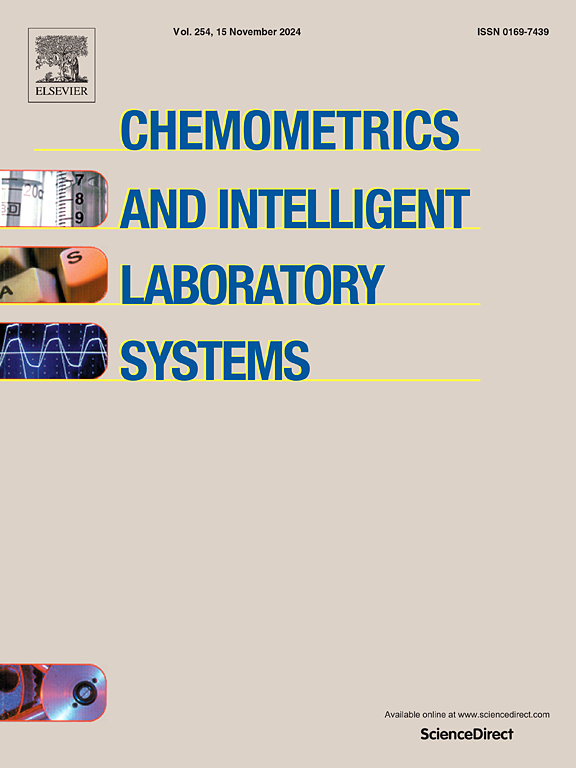Distortion prediction model considering process types in film manufacturing process and identification of critical process variables
IF 3.8
2区 化学
Q2 AUTOMATION & CONTROL SYSTEMS
Chemometrics and Intelligent Laboratory Systems
Pub Date : 2025-06-24
DOI:10.1016/j.chemolab.2025.105474
引用次数: 0
Abstract
Optical films are used in flat panel displays, touch sensors and other devices. The film is wound and sent to the next process, but defects are generated in the winding, indicating an issue. Defects are often identified by customers after shipment. It is therefore anticipated that the identification of characteristics associated with defects at the end of the process will facilitate the detection of defective products in advance, or alternatively, result in a reduction of the defects themselves. One of the factors that contribute to the occurrence of defects is the distortion of the film on the roll surface. The degree of distortion is determined by calculating the difference between the instantaneous and average distance between the film surface and the sensor, as measured by the displacement meter installed before the winding. The objective of this study was to identify the process conditions that cause the distortion of the film as measured by the displacement meter through the application of machine learning techniques. A model was constructed between the sensor data of the process conditions and the distortion index, the relationship between them was identified, and the process causing the distortion was estimated by analyzing the model. The results of this study successfully narrowed down the process variables that are common causes of distortion among three displacement meters with different measurement positions.
薄膜制造过程中考虑工艺类型的变形预测模型及关键工艺变量的识别
光学薄膜用于平板显示器、触摸传感器和其他设备。薄膜被卷绕并送到下一道工序,但卷绕过程中产生了缺陷,这表明有问题。缺陷通常在发货后由客户识别。因此,预计在过程结束时识别与缺陷相关的特征将有助于提前发现缺陷产品,或者减少缺陷本身。导致缺陷发生的因素之一是卷筒表面薄膜的变形。通过计算薄膜表面与传感器之间的瞬时距离和平均距离之差来确定变形程度,这是由绕组前安装的位移计测量的。本研究的目的是通过应用机器学习技术,确定导致位移计测量的薄膜变形的工艺条件。在工艺条件的传感器数据与畸变指标之间建立了模型,识别了两者之间的关系,并通过对模型的分析估计了引起畸变的工艺。本研究的结果成功地缩小了三种不同测量位置的位移仪中常见的导致畸变的过程变量。
本文章由计算机程序翻译,如有差异,请以英文原文为准。
求助全文
约1分钟内获得全文
求助全文
来源期刊
CiteScore
7.50
自引率
7.70%
发文量
169
审稿时长
3.4 months
期刊介绍:
Chemometrics and Intelligent Laboratory Systems publishes original research papers, short communications, reviews, tutorials and Original Software Publications reporting on development of novel statistical, mathematical, or computer techniques in Chemistry and related disciplines.
Chemometrics is the chemical discipline that uses mathematical and statistical methods to design or select optimal procedures and experiments, and to provide maximum chemical information by analysing chemical data.
The journal deals with the following topics:
1) Development of new statistical, mathematical and chemometrical methods for Chemistry and related fields (Environmental Chemistry, Biochemistry, Toxicology, System Biology, -Omics, etc.)
2) Novel applications of chemometrics to all branches of Chemistry and related fields (typical domains of interest are: process data analysis, experimental design, data mining, signal processing, supervised modelling, decision making, robust statistics, mixture analysis, multivariate calibration etc.) Routine applications of established chemometrical techniques will not be considered.
3) Development of new software that provides novel tools or truly advances the use of chemometrical methods.
4) Well characterized data sets to test performance for the new methods and software.
The journal complies with International Committee of Medical Journal Editors'' Uniform requirements for manuscripts.

 求助内容:
求助内容: 应助结果提醒方式:
应助结果提醒方式:


